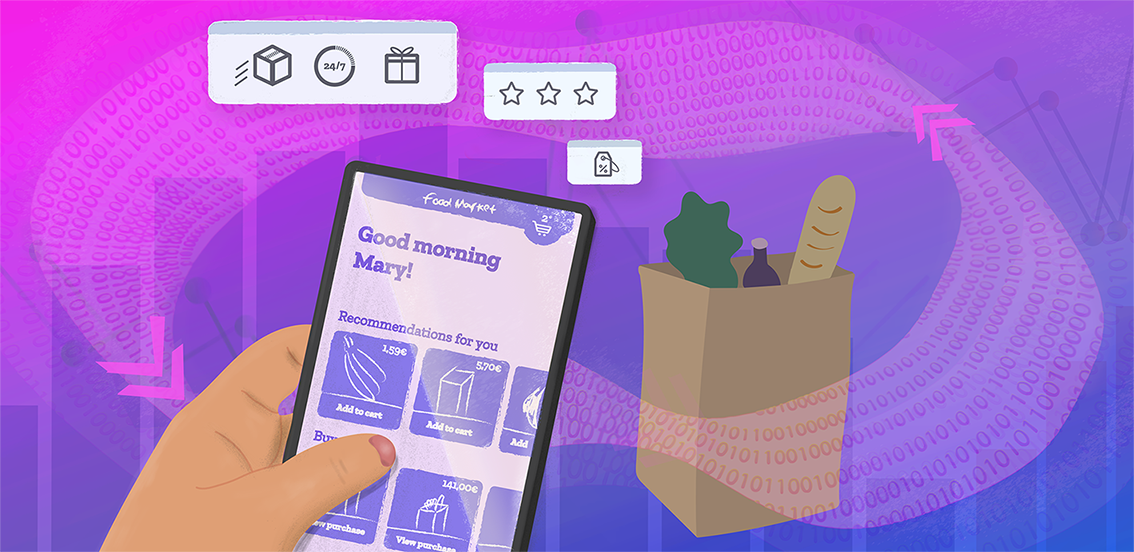
Without personalization, your digital loyalty program is failing. Time to fix that.
The number of loyalty programs offered by companies these days is enormous, and only keeps increasing. At the same time, however, today’s customers expect more from brands and their loyalty programs.
Customers expect personalized services in exchange for loyalty – and will easily abandon brands that fail to deliver.
Sounds rough, right? Unfortunately it is true.
In a recent study, 78% of B2C customers reported being more loyal to brands that truly understand them. Correspondingly, a study by Salesforce showed that 52% of consumers would switch brands if they felt that they weren’t getting a personalized experience.
In light of these findings, it is alarming that over 60 percent of consumers feel that the brands that should know them simply fail in very basic areas of customer insight, such as purchase histories and personal preferences.
Customer expectations create a challenge – but also a great business opportunity
According to our recent nationwide survey, investing in digital loyalty is now more important than ever. People are spending more time and money on digital services as a result of the current pandemic, and around 35% of Finns say that they are more interested in digital loyalty programs than before.
So how can a company build a loyalty program and personalized services that customers find valuable and engaging – and how should this be positioned in the company’s business strategy?
We sat down and asked Hanna-Reetta Luukkainen, who works as Development Manager at K Group, focusing on the data-driven development of customer experiences.
“As a company, we have renewed many parts of our loyalty program but there is still a lot to be done. It’s been an interesting journey so far, since customer needs for a ‘loyalty scheme’ are very different today compared to 1997, when our K Plus program was launched. Understanding the new era of customer loyalty requires a lot of cross-functional and multi-method analysis at all steps of the development projects”, Luukkainen says.
Put a high priority on customer loyalty – and use data for your customers’ benefit
Building loyalty begins with understanding who your customers are. What they do and don’t like, what they need and when, as well as when they want to interact with you and how. Careful data analysis can reveal surprising things about your customers, their needs and preferences.
Read how data revealed the means to personalize booking for Tallink’s most loyal customers, resulting in an award-winning customer experience.
Luukkainen knows the power of loyalty programs and customer data in service development. According to her, the need for accurate, updated and securely stored data is now bigger than ever.
“With over 3.5 million loyalty members, 2.4 million weekly visitors of our K-Ruoka.fi website and the K-Ruoka mobile app, K Group’s digital service is the biggest food media in Finland. This is the size of the audience for which we need to deliver a personalized shopping and browsing experience.”
And the digital business is growing fast: during the pandemic, K Group has seen an incredible 800% increase in their online sales. According to Luukkainen, building and offering a personalized customer experience has a high priority in the company’s strategy.
“We aim high when it comes to developing the loyal customer’s shopping experience, and our strategic target is to offer a personalized and seamless shopping experience in all our channels. To achieve this target, we need to improve our processes at all stages of the customer journey.”
In addition to this strategic position, K Group’s team has a pioneering approach to utilizing customer data for the customers’ own benefit.
“Customer data needs to belong to the customers, and information about yourself and your choices can be a starting point to a better lifestyle. We embrace this approach and have given our customers access to their enriched shopping history data in our K-Ostokset service. In the service, users can view data like the CO2 footprint of their purchases.”
After its first year, the service has more than 130,000 unique users.
Adopt the right mindset: it’s not a one-off project but ongoing development
Besides the change of mindset regarding who should benefit from the use of customer data, you should accept that investing in the customer experience is not going to be a project but an ongoing journey:
“Bringing the user and their data to the core of different processes requires systematic work and improved awareness from various stakeholders, especially because the regulatory and technological landscapes are changing fast and more solutions for managing user identities are constantly being developed.
In summary, I think that managing your customers’ lifecycle and data is not a sprint but a marathon. It should be at the very core of your business strategy.”
If you’d like to learn more about data-driven design, join our webinar on profitable service design on June 16 to explore it through our Tallink and VR case studies. At Qvik, we have a long history of obsessing about customer needs and building market-leading customer experiences in digital services. This has resulted in several success stories together with our clients: read for example how Qvik helped Aurinkomatkat improve conversion by 60% through focusing on customer needs and personalization.
If you feel that your company’s loyalty & customer experience development may not be in line with your company’s growth strategy or are not sure how to start the journey, we are happy to help.


